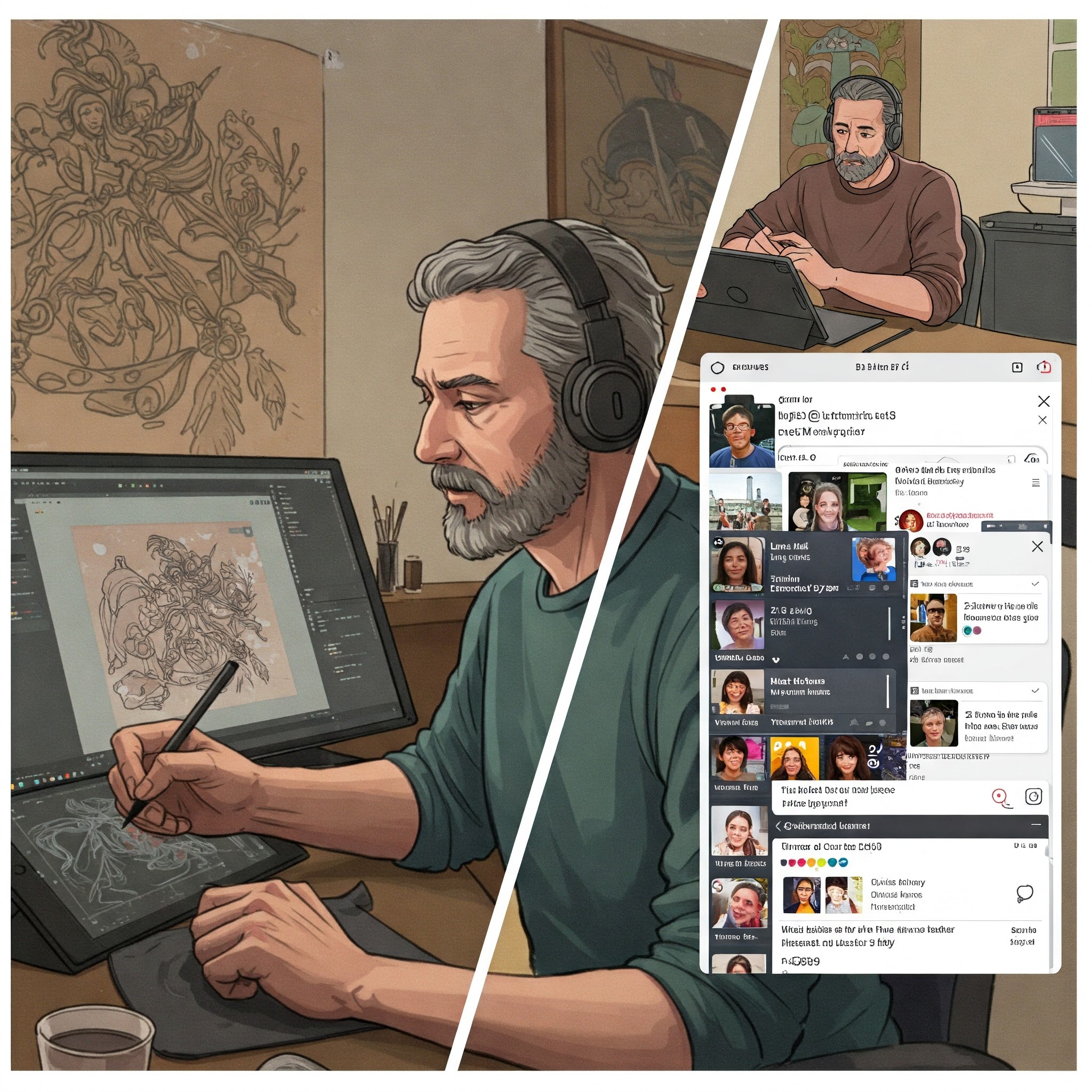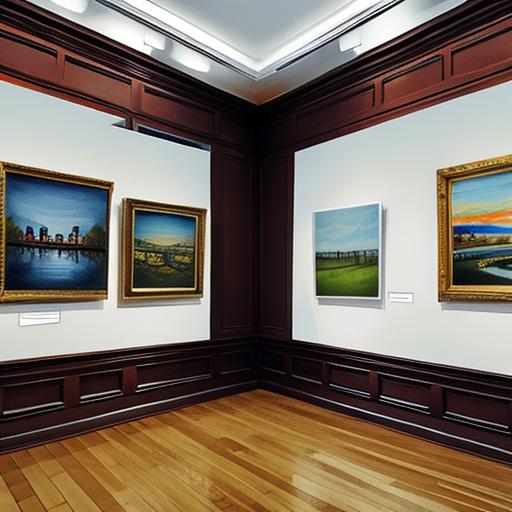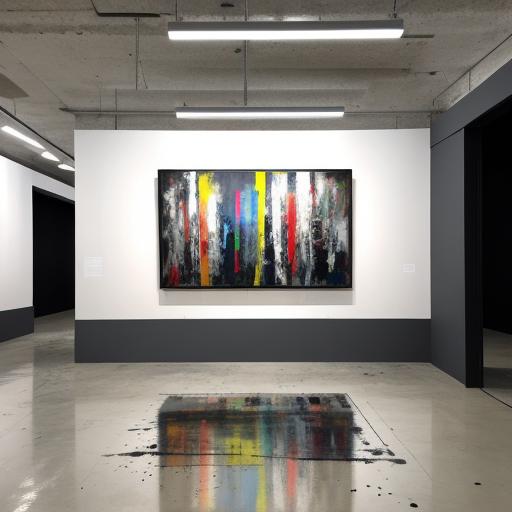In today’s interconnected world, online artists are redefining what it means to be a successful creator. The internet has democratized the art industry, breaking down traditional barriers and enabling artists from all backgrounds to showcase their work, build global audiences, and establish sustainable careers without relying on conventional gatekeepers. Whether you’re a digital creator pushing the boundaries of technology or a traditional painter seeking to expand your reach, the digital landscape offers unprecedented opportunities to connect, create, and thrive as an artist in the 21st century.
Key Points:
- Digital platforms have revolutionized how artists create, share, and sell their work
- The most successful online artists combine artistic skill with strategic digital marketing
- Various platforms serve different purposes in an artist’s online ecosystem
- Building a sustainable online career requires consistency, authenticity, and adaptability
- Both digital creators and traditional artists can flourish in the online space
- The digital art community offers valuable support, learning opportunities, and collaboration
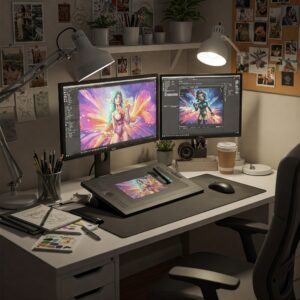
The Digital Revolution in Art
The art world has undergone a profound transformation in recent decades. Where artists once relied primarily on gallery representation and physical exhibitions, today’s creative landscape offers multiple pathways to artistic success through digital platforms, online communities, and direct-to-audience business models.
From Traditional Galleries to Virtual Showcases
Before the digital revolution, an artist’s career trajectory typically required validation from established institutions. Gallery representation, museum exhibitions, and formal education credentials often determined who could achieve recognition and financial success. Geography further limited opportunities, with major art centers like New York, London, and Paris serving as essential hubs for serious career advancement.
Today’s online artists operate in a dramatically different environment. Digital platforms enable creators to:
- Showcase work to global audiences without geographic limitations
- Build direct relationships with collectors and clients
- Establish authority and recognition independent of traditional institutions
- Create and sell work across multiple formats and price points
- Learn from and collaborate with peers worldwide
The impact has been particularly significant for digital artists, whose digital painting techniques and technological innovations have evolved from experimental novelties to respected artistic expressions. Meanwhile, traditional artists working with watercolor painting techniques or oil painting techniques have found new audiences by effectively digitizing and sharing their physical creations.
The Pandemic Acceleration
While the digital transformation of the art world was well underway before 2020, the COVID-19 pandemic dramatically accelerated this evolution. When physical galleries and art fairs abruptly closed, artists with established online presences proved remarkably resilient.
This global shift highlighted several key advantages of the digital art ecosystem:
- Stability during physical world disruptions
- Flexibility in creating and selling work
- Direct connections with audiences regardless of location
- Multiple revenue streams beyond traditional sales
- Community support during challenging times
As the art market trends for 2025 continue to evolve, the integration of digital and physical art experiences remains a defining characteristic of the contemporary art landscape.
Building Your Online Artist Presence
Creating exceptional artwork is just the beginning of a successful online art career. The most thriving online artists carefully construct their digital presence with strategic intention, consistent engagement, and thoughtful platform selection.
Crafting Your Digital Portfolio
Your online portfolio serves as your digital gallery—often providing the first impression for potential collectors, clients, and collaborators. Unlike a traditional resumé or portfolio, an online artist’s presence must be visually cohesive, regularly updated, and optimized for discovery.
When creating your portfolio, consider these essential elements:
- Strategic platform selection: Choose the right combination of portfolio websites, social media, and marketplaces for your specific artistic style and goals
- Visual consistency: Develop a recognizable aesthetic across platforms to strengthen your artistic brand
- High-quality documentation: Invest in proper photography and scanning of traditional works using techniques from free stock photos for artists
- Compelling artist statement: Clearly articulate your vision and process
- Organized presentation: Categorize work logically with intuitive navigation
- Contact information: Make it easy for interested parties to reach you
Each platform offers different advantages depending on your artistic medium and career goals. Many successful artists maintain several platforms, using each for its specific strengths while maintaining consistent branding across all channels.
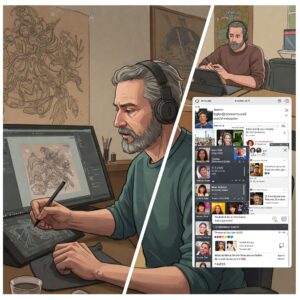
Leveraging Social Media Effectively
Social media platforms have become indispensable tools for online artists, offering unparalleled opportunities to build audiences, share processes, and connect with collectors. However, each platform has distinct audiences and content preferences that savvy artists must navigate.
| Platform | Best For | Content Type | Audience |
|---|---|---|---|
| Visual portfolio, process videos | Images, Reels, Stories | Broad art enthusiasts | |
| TikTok | Process videos, personality | Short-form video | Younger demographics |
| Industry connections, news | Text, images, conversation | Art community, professionals | |
| YouTube | In-depth tutorials, vlogs | Long-form video | Dedicated followers, students |
| Inspiration, passive discovery | Categorized images | Design-focused, project planners |
Rather than attempting to maintain a presence on every platform, successful online artists typically focus on mastering 2-3 channels that best align with their artistic style and target audience. For instance, artists specializing in watercolor blending techniques might find particular success on Instagram and Pinterest, while digital concept artists often thrive on ArtStation and Twitter.
According to research by The Art Market 2023 Report, artists who post consistently on their primary platform (at least 3 times weekly) see engagement rates up to 60% higher than those who post sporadically.
“The most successful online artists don’t just share finished work—they invite their audience into their creative process. By sharing works-in-progress, techniques, and inspirations, artists build deeper connections that translate into stronger support and more sustainable careers.”
Jessica Balsley, Founder of The Art of Education University
Building Community Connections
The solitary artist archetype has less relevance in today’s interconnected digital landscape. Building connections with fellow artists and enthusiasts is crucial for long-term success. Online art communities provide opportunities for feedback, collaboration, and mutual support that can significantly accelerate your artistic development.
Look for communities that align with your medium and style. Whether through Discord servers, Facebook groups, or platform-specific forums, these connections can provide invaluable resources:
- Constructive criticism and technical advice
- Industry insights and opportunity alerts
- Emotional support during creative challenges
- Potential collaborations and referrals
- Expanded audience through cross-promotion
Remember that meaningful community engagement requires giving as well as receiving. The most respected online artists actively contribute to their communities through thoughtful feedback, resource sharing, and mentorship.

Monetizing Your Art Online
Transforming artistic passion into sustainable income is more accessible than ever for online artists. Today’s digital landscape offers multiple revenue streams that can be combined to create financial stability.
Direct Sales Platforms
Online marketplaces provide artists with ready-made infrastructure for selling original works, prints, and merchandise without significant upfront investment. Understanding the strengths of each platform is essential for strategic placement of your work.
Popular platforms include:
- Etsy: Ideal for original traditional artwork, handmade items, and limited edition prints
- Society6 / Redbubble: Print-on-demand services that place your designs on various products
- ArtStation Marketplace: Focused on digital art and concept art
- INPRNT: Curated print service with high-quality reproduction
When choosing platforms, consider commission rates, audience alignment, and control over pricing and presentation. Many successful artists utilize multiple marketplaces while simultaneously building direct sales channels through personal websites, as outlined in how to sell art online in 2025.
Commission-Based Work
Custom commissions often form the backbone of many online artists’ income, particularly for those creating portraiture or illustration. Clear commission policies, professional client communication, and strategic pricing are essential for success in this arena.
For artists focused on commissioning, consider:
- Creating a transparent pricing structure
- Developing a clear contract and process outline
- Showcasing previous commission examples
- Setting reasonable timelines and boundaries
- Using specialized platforms like Fiverr, Upwork, or commission-specific sites
Learning how to build your art brand can significantly enhance your ability to attract and maintain commission clients.
Teaching and Content Creation
Many online artists supplement their income by sharing their knowledge through tutorials, online courses, and educational content. This approach not only generates revenue but also enhances your reputation and expands your audience.
Potential teaching platforms include:
- Skillshare and Udemy for structured courses
- Patreon for exclusive content and community
- YouTube for ad revenue and sponsorships
- Personal websites for direct course sales
The most successful artist-educators develop signature teaching styles and comprehensive curricula rather than publishing isolated tutorials. Consider how your unique artistic approach or specialized techniques could translate into valuable educational content.
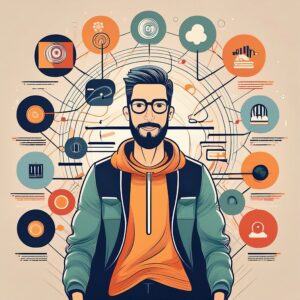
Bridging Digital and Traditional Art Worlds
The distinction between digital and traditional art continues to blur in the online space. Many of today’s most successful online artists work across both realms, combining approaches to maximize creative possibilities and market opportunities.
Digitizing Traditional Art
Traditional artists can extend their reach by effectively digitizing their physical works. This process involves more than simple photography—it requires careful attention to lighting, color accuracy, and resolution to ensure your art translates effectively to digital display.
Important considerations include:
- Professional scanning or photography equipment
- Color calibration for accurate reproduction
- High-resolution files for printing options
- Multiple formats for different platforms
Successful traditional artists like landscape painters often document their process digitally, creating engaging content that showcases both the final artwork and the craft behind it. This approach bridges the digital-traditional divide, appealing to audiences who appreciate physical media while leveraging digital platforms for discovery.
Traditional Techniques in Digital Art
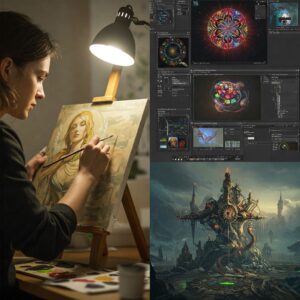
Conversely, many digital artists incorporate traditional art principles and textures into their work. By studying oil painting techniques or acrylic painting methods, digital artists can create more authentic, expressive digital paintings that stand out in an increasingly crowded digital landscape.
Digital tools that emulate traditional media continue to advance, allowing artists to:
- Simulate natural media textures and behaviors
- Apply classical composition principles
- Incorporate handmade elements into digital workflows
- Create digital works with the depth and richness of traditional art
Artists interested in this hybrid approach might find valuable insights in how to make digital art look traditional.
The Future of Online Art
As technology continues to evolve, so too will opportunities for online artists. Emerging technologies present both challenges and possibilities for tomorrow’s digital creators.
Several developments to watch include:
- Virtual and augmented reality galleries: Creating immersive experiences beyond 2D screens
- Blockchain technology and NFTs: Offering new models for digital ownership and provenance
- AI collaboration tools: Providing new creative possibilities as seen in AI art guide 2024
- Enhanced live streaming technologies: Enabling more interactive creator-audience experiences
- Decentralized art communities: Building sustainable ecosystems outside traditional platforms
While we can’t predict exactly how these developments will reshape the art world, successful online artists will be those who remain adaptable, continuously learning, and open to experimentation. Building a strong foundation of artistic skill, digital literacy, and community connection provides the resilience needed to thrive through ongoing technological evolution.
Conclusion
The rise of online artists represents one of the most significant democratizations in art history. By removing traditional barriers to entry and connecting creators directly with global audiences, digital platforms have created unprecedented opportunities for artistic expression and sustainable careers.
Whether you’re a traditional painter exploring digital opportunities, a digital native creating entirely in the virtual realm, or someone navigating both worlds, the principles of success remain consistent: create authentic work, build meaningful connections, and approach your online presence with strategic intention.
The most successful online artists understand that technology is simply a tool—the heart of artistic success still lies in creating work that resonates, communicating with authenticity, and consistently evolving your craft. By combining artistic excellence with digital savvy, today’s online artists are writing a new chapter in the ever-evolving story of human creativity.
FAQ Section for Online Artists
Frequently Asked Questions About Online Art Careers
Q: How do I start as an online artist with no experience?
A: Begin by choosing your preferred digital art software and dedicating time to learning the basics through free tutorials on YouTube or platforms like Skillshare. Create a simple portfolio showcasing 10-15 of your best pieces, then establish a presence on 1-2 social media platforms where you can consistently share your work and connect with other artists.
Q: What equipment do I need to become a digital artist?
A: Essential equipment includes a computer or tablet with sufficient processing power, digital art software (Adobe Creative Suite, Procreate, or free alternatives like GIMP), and a graphics tablet or stylus. While professional equipment helps, you can start with basic tools and upgrade as your skills and income grow.
Q: How long does it take to become a successful online artist?
A: Success timelines vary greatly, but most artists see meaningful progress within 1-2 years of consistent practice and online presence building. Full-time income typically takes 2-5 years, depending on your dedication, marketing efforts, and chosen niche. The key is consistent creation and engagement with your audience.
Q: Can traditional artists succeed online without going digital?
A: Absolutely! Traditional artists can thrive online by professionally photographing or scanning their physical artwork, sharing their creative process through videos and time-lapses, and building an online following. Many successful online artists work exclusively in traditional media while using digital platforms for marketing and sales.
Q: Which social media platforms are best for artists?
A: Instagram is ideal for visual portfolios and behind-the-scenes content, TikTok works well for process videos and reaching younger audiences, Pinterest excels for driving traffic to your website, and Twitter helps with industry connections. Focus on mastering 2-3 platforms rather than spreading yourself too thin across all channels.
Q: How do I price my artwork for online sales?
A: Consider factors including materials cost, time invested, your experience level, market demand, and comparable artists’ pricing. Start with the formula: (Materials + Time × Hourly Rate) + Profit Margin. Research similar artists in your style and adjust accordingly. Don’t undervalue your work, but remain competitive for your skill level.
Q: What’s the difference between selling originals vs. prints online?
A: Original artwork commands higher prices but limits you to single sales, while prints allow multiple sales from one piece at lower price points. Most successful online artists offer both options, using prints to generate steady income while building toward higher-value original sales.
Q: How do I protect my artwork from being stolen online?
A: Watermark your images, use lower resolution images for display, register important works with copyright offices, and consider reverse image searches to monitor unauthorized use. While you can’t prevent all theft, these steps deter casual copying and provide legal protection for serious cases.
Q: Should I focus on one art style or experiment with different styles?
A: Early in your career, experimentation helps you discover your authentic voice. However, successful online artists typically develop a recognizable style that helps them build a cohesive brand and loyal following. Find the balance between consistency and growth that feels authentic to your artistic journey.
Q: How often should I post on social media as an artist?
A: Consistency matters more than frequency. Aim for at least 3-4 posts per week on your primary platform, maintaining a regular schedule your audience can anticipate. Quality content posted consistently will outperform sporadic posting, even if less frequent.
Q: Can I make a full-time living as an online artist?
A: Yes, many artists earn full-time incomes online through diverse revenue streams including original art sales, prints, commissions, teaching, licensing, and digital products. Success requires treating your art as a business, developing multiple income sources, and consistently building your audience and skills.
Q: What are the biggest mistakes new online artists make?
A: Common mistakes include inconsistent posting, not engaging with their audience, underpricing their work, trying to be on every platform, not building an email list, and giving up too quickly. Focus on quality over quantity, build genuine connections, and maintain patience as you grow your presence.
Important Resources for Online Artists
Essential Platforms and Tools
Portfolio Websites
- Behance – Adobe’s creative community platform for showcasing professional work
- ArtStation – Industry-standard platform for digital artists and concept artists
- DeviantArt – Long-established community for all types of digital and traditional art
- Dribbble – Design community focused on UI/UX and graphic design work
Social Media Platforms
- Instagram – Primary visual platform for artists to share work and build following
- TikTok – Short-form video content ideal for process videos and tutorials
- Pinterest – Visual discovery platform excellent for driving website traffic
- YouTube – Long-form content platform for tutorials and art vlogs
Online Marketplaces
- Etsy – Marketplace for handmade, vintage, and creative goods
- Society6 – Print-on-demand platform for artwork on various products
- Redbubble – Global marketplace for independent artists to sell designs
- INPRNT – Curated print service focused on high-quality art reproductions
Software and Digital Tools
Professional Software
- Adobe Creative Cloud – Industry standard including Photoshop, Illustrator, and more
- Procreate – Popular iPad app for digital painting and illustration
- Clip Studio Paint – Professional software favored by manga and comic artists
- Corel Painter – Digital art software that mimics traditional painting techniques
Free Alternatives
- GIMP – Free open-source image editor with professional capabilities
- Krita – Free digital painting program designed by artists
- Blender – Free 3D creation suite for modeling, animation, and rendering
Educational Resources
Online Learning Platforms
- Skillshare – Creative classes including digital art, traditional techniques, and business skills
- Udemy – Comprehensive courses on art software, techniques, and art business
- Domestika – Creative courses taught by industry professionals
- New Masters Academy – Traditional art fundamentals and figure drawing courses
Free Educational Content
- Proko – Free and premium art instruction focusing on fundamentals
- YouTube Art Channels – Thousands of free tutorials on every art topic imaginable
- Line of Action – Free figure drawing practice with timed gesture sessions
Business and Marketing Resources
Website Building
- Squarespace – User-friendly website builder with beautiful templates
- WordPress – Flexible platform for building custom art websites
- Wix – Drag-and-drop website builder with artist-focused templates
Email Marketing
- Mailchimp – Email marketing platform for building and maintaining subscriber lists
- ConvertKit – Email marketing specifically designed for creators
- Flodesk – Beautiful email templates designed for visual creators
Analytics and SEO
- Google Analytics – Track website traffic and visitor behavior
- Google Search Console – Monitor your website’s search performance
- Canva – Design tool for creating social media graphics and marketing materials
Community and Networking
Artist Communities
- Reddit Art Communities – Various subreddits for feedback, inspiration, and discussion
- Discord Art Servers – Real-time chat communities for artists to connect and collaborate
- Facebook Artist Groups – Specialized groups for different art styles and business discussions
Professional Organizations
- Society of Illustrators – Professional organization for illustrators
- Graphic Artists Guild – Advocacy and resources for graphic artists
- Association of Science-Technology Centers – For artists working in science and technology fields
Legal and Business Resources
Copyright and Legal
- U.S. Copyright Office – Official resource for copyright registration and information
- Creative Commons – Flexible copyright licenses for sharing creative work
- Volunteer Lawyers for the Arts – Legal assistance for artists and creative professionals
Financial Management
- QuickBooks – Accounting software for tracking income and expenses
- Wave Accounting – Free accounting software designed for small businesses
- Etsy Pattern – Website builder integrated with Etsy for seamless selling
Inspiration and Industry News
Art Blogs and Publications
- Colossal – Contemporary art and visual culture blog
- Juxtapoz Magazine – Contemporary art and culture publication
- Creative Bloq – Design and art news, tutorials, and inspiration
Market Research
- Artsy – Discover and collect contemporary art with market insights
- Artnet – Art market news, auction results, and price database
- Artwork Archive Blog – Artist career advice and art business insights
These resources provide a comprehensive foundation for building and maintaining a successful online art career. Bookmark the ones most relevant to your current needs and goals, and explore others as your career develops.

